 Last additions - SAITAMA 埼玉県 Last additions - SAITAMA 埼玉県 |

When full, Saitama Super Arena has three tiers of seats.Jan 29, 2020
|
|
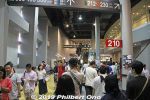
Corridor in Saitama Super Arena. Jan 29, 2020
|
|

Posing with player cutouts.Jan 29, 2020
|
|
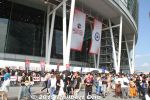
Long line to buy basketball merchandise outside the stadium.Jan 29, 2020
|
|
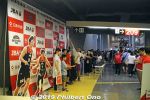
Hallway after showing your ticket. Long line to pose with player cutouts.Jan 29, 2020
|
|
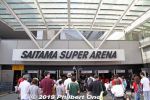
Entering Saitama Super Arena.Jan 29, 2020
|
|
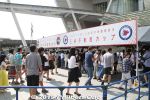
International Basketball Games was held first, with Japan vs. Tunisia on Aug. 25, 2019.Jan 29, 2020
|
|
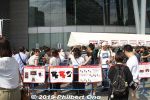
Long line to buy basketball merchandise outside the stadium. Can well imagine what it will be like during the Olympics...Jan 29, 2020
|
|

Front side of Saitama Super Arena. Enter toward the left side. Looks like a complicated structure from the outside.I was here to see men's and women's basketball games were held on Aug. 25, 2019 as part of the five-day International Basketball Games event for men and the Mitsui Fudosan Cup for women. It was also an Olympic test event.Jan 29, 2020
|
|
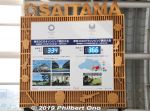
Countdown to Tokyo 2020 Olympics and Paralympics as of Aug. 25, 2019.Jan 29, 2020
|
|
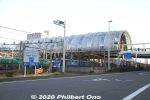
JR Saitama-Shintoshin Station exterior view.Jan 29, 2020
|
|
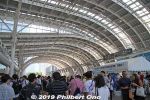
JR Saitama-Shintoshin Station outside the turnstile. Go left.Jan 29, 2020
|
|
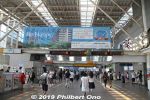
JR Saitama-Shintoshin Station heading out the turnstile.Jan 29, 2020
|
|
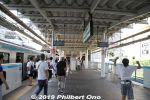
Saitama Super Arena is right near JR Saitama-Shintoshin Station, about 40 min. from Tokyo Station on the JR Takasaki Line (30 min. via Ueno-Tokyo Line) and Keihin-Tohoku Line (42 min.).Very convenient because this train line runs between Saitama and Yokohama and passes through central Tokyo including major train stations. Jan 29, 2020
|
|

Keisai Eisen's print shows a traveler approaching a house to ask for directions to Hikawa Tenman Shrine. A woman farmer is threshing grain, and her husband smoking a pipe in the house. Tobacco leaves are drying from the eaves. A man sits sideways on a pack horse headed in the opposite direction. 岐阻街道 桶川宿 曠原之景Jan 28, 2020
|
|
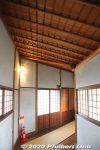
CorridorJan 28, 2020
|
|
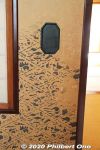
Fusuma sliding door.Jan 28, 2020
|
|
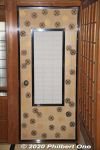
Fusuma sliding door.Jan 28, 2020
|
|
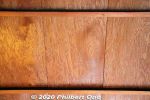
Very rare Yaku-sugi wood ceiling from Japanese cedar trees found on Yakushima island in Kagoshima Prefecture. Beautiful wood grain. Such wood comes from trees as old as 1,000 years. Now illegal to cut down yaku-sugi trees. 屋久杉Jan 28, 2020
|
|
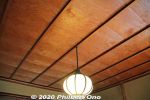
Very rare Yaku-sugi wood ceiling from Japanese cedar trees found on Yakushima island in Kagoshima Prefecture. Jan 28, 2020
|
|

Tea ceremony room.Jan 28, 2020
|
|
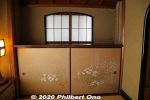
Jan 28, 2020
|
|
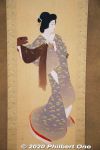
Scroll depicting a woman dancer with a lion head.Jan 28, 2020
|
|
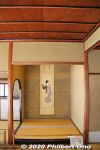
Jan 28, 2020
|
|
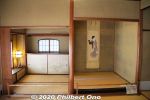
Tea ceremony room alcove.Jan 28, 2020
|
|
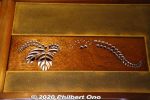
Transom with a paulownia design.Jan 28, 2020
|
|
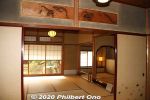
Tea ceremony room.Jan 28, 2020
|
|
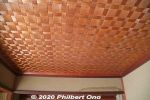
Fancy ceiling.Jan 28, 2020
|
|
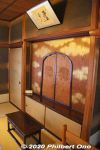
Jan 28, 2020
|
|
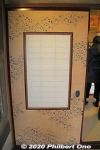
Fusuma sliding door.Jan 28, 2020
|
|
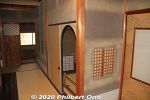
Jan 28, 2020
|
|

Storehouse door, fireproof.Jan 28, 2020
|
|
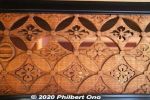
TransomJan 28, 2020
|
|
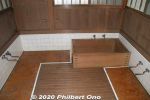
Bath tubJan 28, 2020
|
|
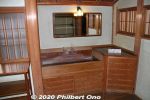
Bathroom sink.Jan 28, 2020
|
|
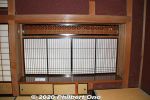
Jan 28, 2020
|
|

Tokonoma alcove.Jan 28, 2020
|
|

Straight-line wood grain on another ceiling.Jan 28, 2020
|
|
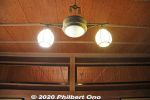
Very rare Yaku-sugi wood ceiling from Japanese cedar trees found on Yakushima island in Kagoshima Prefecture. Beautiful wood grain.Such wood comes from trees as old as 1,000 years. Now illegal to cut down yaku-sugi trees. 屋久杉Jan 28, 2020
|
|
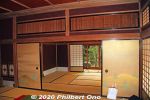
Jan 28, 2020
|
|
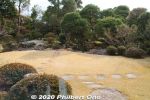
GardenJan 28, 2020
|
|
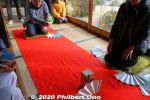
It's quite hard for beginners to even knock it down because the fan tends to fly in unpredictable directions.Jan 28, 2020
|
|
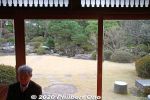
The imported glass was also expensive.Jan 28, 2020
|
|
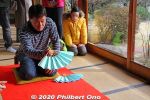
Our tosenkyo instructor takes aim. Jan 28, 2020
|
|
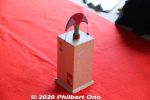
Called "cho" (butterfly), the target is shaped like a gingko leaf. The number of points you earn depends on how well you knock down the target.Jan 28, 2020
|
|
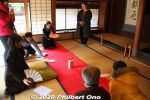
We tried playing a traditional fan-tossing game called tosenkyo (投扇興). You toss a folding fan at a small target on a small block. Jan 28, 2020
|
|
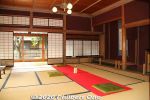
Japanese-syle room in the West Wing.Jan 28, 2020
|
|
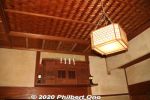
Shinto shrine altar near the fancy ceiling.Jan 28, 2020
|
|

Jan 28, 2020
|
|
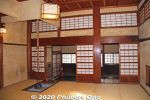
Farmhouse room.Jan 28, 2020
|
|
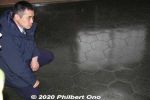
Entrance hall has this rare stone tiles on the floor.Jan 28, 2020
|
|
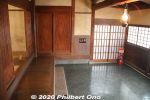
Entrance hall has this rare stone tiles on the floor.Jan 28, 2020
|
|

This West Wing part of the house is desiged like a tea ceremony room.Jan 28, 2020
|
|
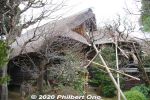
The home has three wings, this wing witth a thatched roof is designed like a farmhouse.Jan 28, 2020
|
|
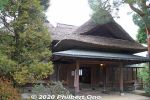
Toyama Memorial Museum (遠山記念館) has this thatched-roof home built in 1936 by Kawajima-native Toyama Gen'ichi (遠山元一 1890–1972), the founder of Nikko Securities. It was a home for his mother. Jan 28, 2020
|
|
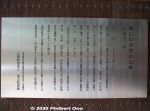
About Toyama Memorial Museum (遠山記念館).Jan 28, 2020
|
|

Sightseeing map of Kawajima town in Saitama Prefecture. Looks like it has a lot to see.Jan 28, 2020
|
|
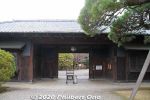
Entrance to Toyama Memorial Museum (遠山記念館).Jan 28, 2020
|
|
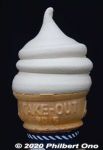
Shoyu soft-serve ice cream.Jan 28, 2020
|
|
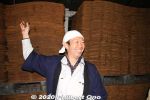
Waste materials from making shoyu.Jan 28, 2020
|
|
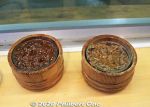
Different stages of fermenting. We could taste the difference.Jan 28, 2020
|
|

What the vats look like down below.Jan 28, 2020
|
|
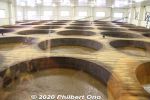
Large wooden vats where the soy sauce is fermented and aged.Jan 28, 2020
|
|
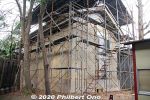
Old warehouse.Jan 28, 2020
|
|
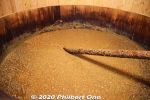
Inside the vat of fermenting shoyu.Jan 28, 2020
|
|
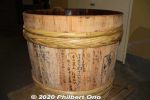
Jan 28, 2020
|
|
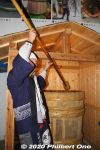
He showed us how to mix the vat.Jan 28, 2020
|
|
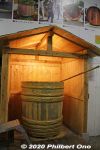
A sample vat that we could mix using a long stick.Jan 28, 2020
|
|

Lots of salt.Jan 28, 2020
|
|
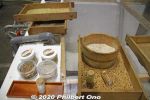
The ingredients used in making shoyu. Lots of soybeans and salt. Jan 28, 2020
|
|

Fueki Masatsugu explains about a large vat of what will become soy sauce.Jan 28, 2020
|
|

Kinbue also makes large wooden vats for shoyu making.Jan 28, 2020
|
|
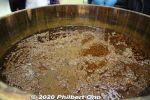
Jan 28, 2020
|
|
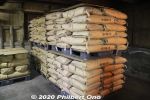
SoybeansJan 28, 2020
|
|

Our factory guide was Fueki Masatsugu, the 12th-generation proprietor of the shoyu brewing company.Jan 28, 2020
|
|
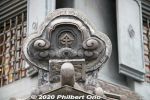
Jan 28, 2020
|
|
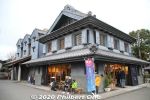
Kinbue Syoyu Park offers a factory tour of their soy sauce (shoyu) factory operated by Fueki Syoyu Brewing Co. (笛木醤油株式会社). Their shoyu products are sold under the "Kinbue" brand name (金笛). They've been in business since This traditional building houses a gift shop and restaurant.Jan 28, 2020
|
|
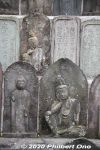
Jan 28, 2020
|
|
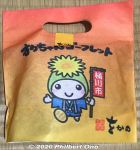
Oke-chan is Okegawa's official mascot. He is a Nakasendo traveler sporting a safflower on this head.Jan 28, 2020
|
|
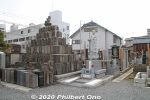
Jan 28, 2020
|
|

Jan 28, 2020
|
|
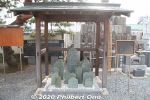
Stone tabletsJan 28, 2020
|
|
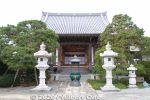
Jonenji's main worship hall is new, rebuilt in 2004.Jan 28, 2020
|
|
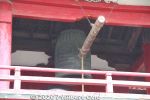
Jan 28, 2020
|
|
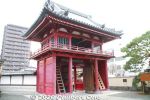
Jan 28, 2020
|
|
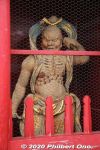
Jan 28, 2020
|
|
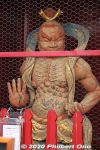
Jan 28, 2020
|
|
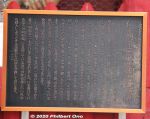
About the gate's Nio statues.Jan 28, 2020
|
|
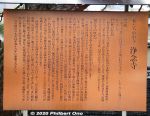
About Jonenji Temple in Okegawa-juku. It's a Jodo-shu Pure Land Sect Buddhist temple.Jan 28, 2020
|
|
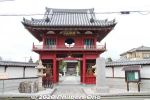
Gate to Jonenji Temple in Okegawa-juku. 浄念寺Jan 28, 2020
|
|
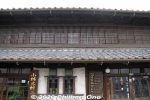
A former Hatago inn for travelers now called the Kobayashi residence. It's now a coffee shop. 旧・旅籠(小林家)Jan 28, 2020
|
|
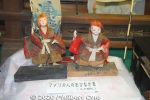
Jan 28, 2020
|
|
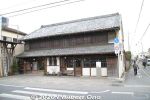
A former Okegawa-juku Hatago inn for travelers now called the Kobayashi residence. Dates from the Edo Period. 旧・旅籠(小林家)Jan 28, 2020
|
|
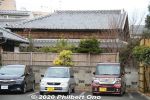
From a side street, we could see the roof of the Honjin stil remaining.Jan 28, 2020
|
|
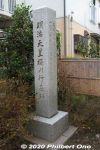
Emperor Meiji also once rested here while passing through in 1878 and there's this stone marker for it at the Honjin gate.Jan 28, 2020
|
|
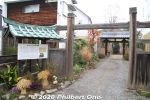
Only part of Okegawa's Honjin remains today, but it is private property and normally not open to the public. We could only see the entrance gate.During its heyday, Okegawa-juku saw VIP guests such as the Maeda daimyo from Kaga (Ishikawa Prefecture) and Tokugawa Nariaki (1800–1860) from Mito (Ibaraki Prefecture). But the most famous VIP to stay in Okegawa was an emperor's daughter named Princess Kazunomiya (1846–1877).Jan 28, 2020
|
|
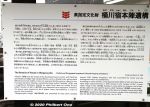
About Okegawa-juku's Honjin luxury lodge (本陣) where VIP travelers like the emperor, daimyo, shogun, or Imperial princess stayed.Jan 28, 2020
|
|
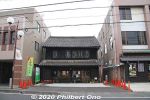
Another Shimamura family building, now a tea shop sandwiched by modern buildings.Jan 28, 2020
|
|
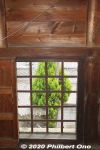
The Shimamura family storehouse is normally open only on the first Saturday of the month from 1:00 pm to 4:00 pm. However, groups can arrange to enter the storehouse on other days by appointment. (Call the Okegawa Tourist Association.)Jan 28, 2020
|
|
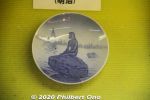
Little Mermaid design.Jan 28, 2020
|
|
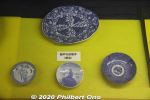
Meiji Period dishes.Jan 28, 2020
|
|
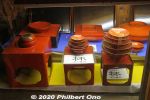
Jan 28, 2020
|
|
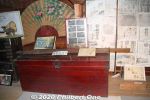
Luggage case.Jan 28, 2020
|
|
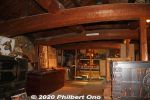
Third floor with roof beams. Jan 28, 2020
|
|
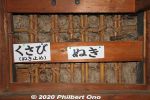
Inside the earthen wall.Jan 28, 2020
|
|
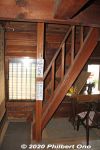
Stairs to the 3rd floor.Jan 28, 2020
|
|
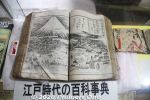
Edo Period encyclopedia.Jan 28, 2020
|
|
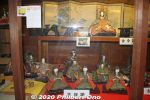
More antique items on the 2nd floor.Jan 28, 2020
|
|
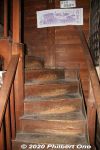
Stairs to the 2nd floor.Jan 28, 2020
|
|
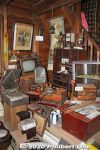
The building is filled with antique items from the old days. Amazing, eclectic collection. Jan 28, 2020
|
|

Entrance to Shimamura family earthen storehouse. It's fireproof and it has proven to be earthquake proof too.Jan 28, 2020
|
|
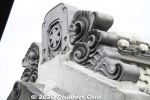
Jan 28, 2020
|
|
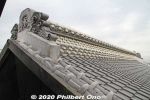
Shimamura family earthen storehouse roof was recently renovated (島村家住宅土蔵).Jan 28, 2020
|
|
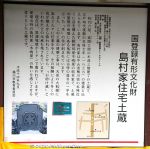
About the Shimamura family earthen storehouse (島村家住宅土蔵). The storehouse is a National Tangible Cultural Property.Jan 28, 2020
|
|
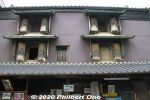
Shimamura family earthen storehouse as built in 1836 as a three-story storehouse to provide employment to construction workers suffering from a bad harvest that year.The storehouse is therefore nicknamed "Otasuke-zo" (お助け蔵) or "Savior Storehouse" for saving people from famine.Jan 28, 2020
|
|
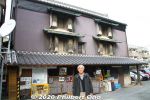
Perhaps Okegawa-juku's most distinctive building is the Shimamura family earthen storehouse (島村家住宅土蔵). Mr. Shimamura was our guide. 島村家住宅土蔵Jan 28, 2020
|
|
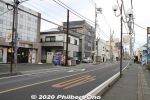
Nakasendo Road in Okegawa-juku.Jan 28, 2020
|
|
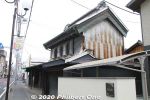
Former wholesaler of safflower, called the Yabe residence. From the Meiji Period. 穀物問屋(矢部家) Jan 28, 2020
|
|
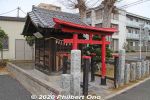
Small shrine still remaining from the old days.Jan 28, 2020
|
|

What's engraved on Inari Shrine's Power Stone (chikara-ishi). 力石Jan 28, 2020
|
|
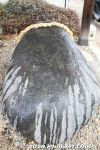
Inari Shrine's Power Stone (chikara-ishi) weighs 610 kg. A sumo wreslter once lifted it in 1852 as written on the stone. 力石Jan 28, 2020
|
|
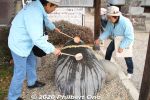
Inari Shrine's Power Stone (chikara-ishi) has to be wet for us to see the engravings. 力石Jan 28, 2020
|
|
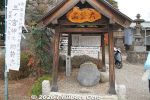
Inari Shrine's Power Stone (chikara-ishi). 力石Jan 28, 2020
|
|
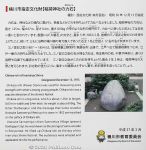
About Inari Shrine's Power Stone (chikara-ishi). 力石Jan 28, 2020
|
|
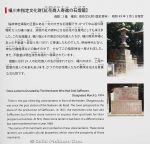
About Inari Shrine's stone lanterns.Jan 28, 2020
|
|
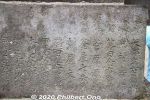
Inari Shrine's stone lanterns were donated by safflower producers. Their names are engraved on the lanterns.Jan 28, 2020
|
|
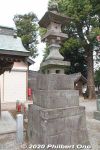
Inari Shrine's stone lanterns were donated by safflower producers.Jan 28, 2020
|
|
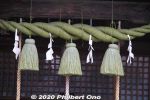
Inari Shrine in Okegawa-juku. This green sacred rope is actually fake, not made of straw. 稲荷神社Jan 28, 2020
|
|
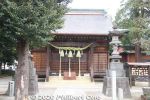
Inari Shrine in Okegawa-juku. 稲荷神社Jan 28, 2020
|
|
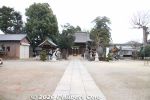
Inari Shrine in Okegawa-juku. 稲荷神社Jan 28, 2020
|
|
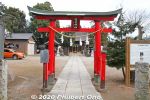
Inari Shrine in Okegawa-juku. 稲荷神社Jan 28, 2020
|
|

Miniature shrine in a tree trunk. Jan 28, 2020
|
|
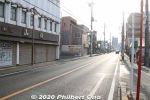
Nakasendo Road in Okegawa-juku. Most of it looks modern.Jan 28, 2020
|
|
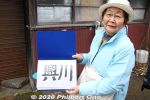
Our guide showed us the original kanji characters used for "Okegawa." 輿川Jan 28, 2020
|
|
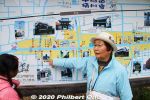
Our guide showed us around Okegawa-juku on foot. All the major spots are within walking distance.Jan 28, 2020
|
|

Make your own Okegawa-juku postcard in three steps. The final print is Keisai Eisen's print of Okegawa-shuku, part of his Sixty-nine Stations of the Kiso Kaido series.Jan 28, 2020
|
|
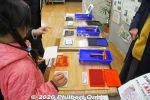
Nakasendo Shukuba-kan has woodblock-style postcard printing in three different colors. It's free.Jan 28, 2020
|
|
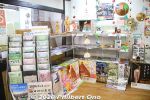
Jan 28, 2020
|
|
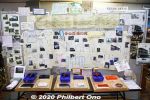
Map of Okegawa-juku's main buildings.Jan 28, 2020
|
|
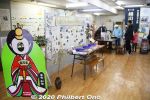
Inside Nakasendo Shukuba-kan (中山道宿場館). Various exhibits and pamphlets about Okegawa-juku. Also a short video. No English.Jan 28, 2020
|
|

Okegawa Tourist Association (桶川市観光協会) in the Nakasendo Shukuba-kan (中山道宿場館) building right in the middle of the former lodging town.Jan 28, 2020
|
|
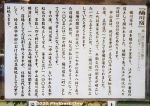
About Okegawa-juku.Jan 28, 2020
|
|

Shukuba lodging towns in Saitama Prefecture as shown at the Nakasendo Shukuba-kan (中山道宿場館).Jan 28, 2020
|
|
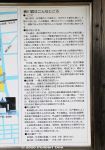
About Okegawa-juku in Japanese.Jan 28, 2020
|
|

Map of Okegawa-juku showing the old buildings that still remain.Jan 28, 2020
|
|
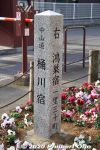
Okegawa-juku marker along the Nakasendo.Jan 28, 2020
|
|
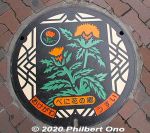
Okegawa-juku was the 6th lodging town (shukuba 宿場) on the old Nakasendo Road (中山道) that connected Tokyo (Edo) and Kyoto through an interior route passing through Saitama, Gunma, Nagano, Gifu, and Shiga Prefectures.It was about 526 km long and had 69 lodging towns where travelers could lodge and water their horses. A few buildings from this era still remain. This Okegawa manhole has a safflower (benibana) design. Okegawa was a major producer of safflowers.Jan 28, 2020
|
|
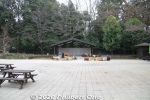
Event stage at Benibana Furusatokan.Jan 28, 2020
|
|
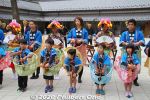
Jan 28, 2020
|
|
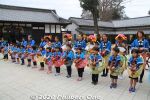
Jan 28, 2020
|
|
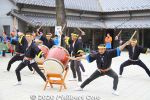
Okegawa Tanpopo Nursery School taiko drummers.Jan 28, 2020
|
|
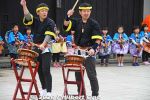
Jan 28, 2020
|
|
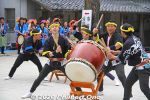
Okegawa Tanpopo Nursery School taiko drummers.Jan 28, 2020
|
|
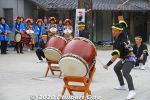
Jan 28, 2020
|
|
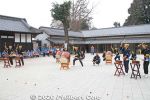
Jan 28, 2020
|
|
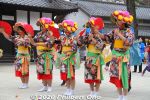
Jan 28, 2020
|
|
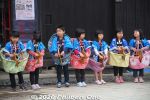
Jan 28, 2020
|
|
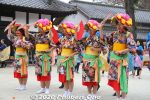
Jan 28, 2020
|
|
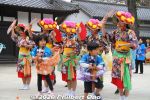
Jan 28, 2020
|
|
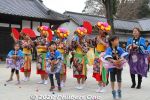
Jan 28, 2020
|
|
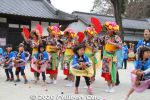
Jan 28, 2020
|
|
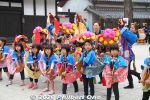
Jan 28, 2020
|
|
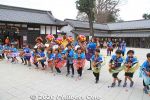
Jan 28, 2020
|
|
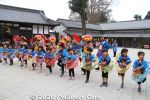
Jan 28, 2020
|
|
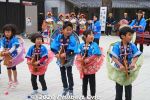
Jan 28, 2020
|
|
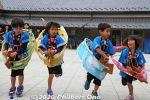
Jan 28, 2020
|
|
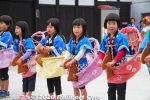
Jan 28, 2020
|
|
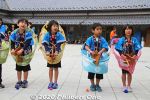
Jan 28, 2020
|
|
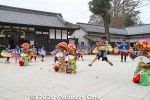
Okegawa Tanpopo Nursery School performed the Ara-uma horse dance (荒馬踊り) backed by taiko drummers.Jan 28, 2020
|
|
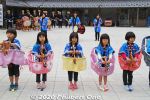
When we arrived in Jan. 2020, we were greeted by a wonderful dance and taiko drum performance by kids and parents from the local Okegawa Tanpopo Nursery School (桶川たんぽぽ保育園).Jan 28, 2020
|
|
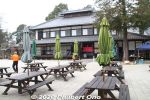
Large plaza outside Benibana Furusato-kan Hall is used for events.Jan 28, 2020
|
|
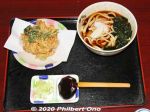
Lunch at Benibana Furusato-kan Hall was udon noodles with tempura topping. Saitama is Japan's second largest producer of udon noodles after Kagawa Prefecture.Jan 28, 2020
|
|
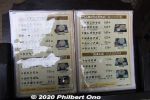
Benibana Furusato-kan Hall menu, mainly udon and soba noodles.Jan 28, 2020
|
|
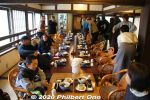
Lunch on the 2nd floor of Benibana Furusato-kan Hall.Jan 28, 2020
|
|
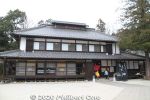
Benibana Furusato-kan Hall (べに花ふるさと館) in Okegawa is mainly a restaurant. It was originally a late 19th century home of an industrialist. It also offers udon-making lessons. From JR Okegawa Station, take the bus and get off at "Beniban"Benibana" means safflower.Jan 28, 2020
|
|

My short video of Rugby World Cup 2019 in Kumagaya, Argentina vs. USAOct 21, 2019
|
|
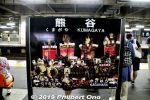
Kumagaya Station platform had this cool sign.Oct 20, 2019
|
|
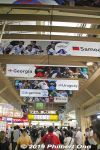
Kumagaya Station Oct 20, 2019
|
|
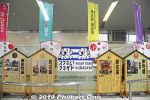
Kumagaya Station had signboards introducing the 12 floats of the Kumagaya Uchiwa Festival in Japanese.Oct 20, 2019
|
|
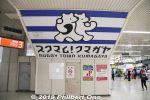
Kumagaya Station Oct 20, 2019
|
|
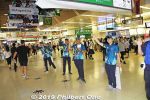
Volunteers at Kumagaya Station saying goodbye.Oct 20, 2019
|
|
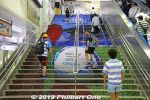
Steps up to the train station.Oct 20, 2019
|
|
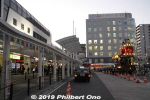
Kumagaya Station still had the Uchiwa festival floats playing until 7:00 pm.Oct 20, 2019
|
|
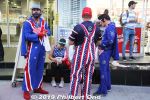
USA rugby fans taking a break.Oct 20, 2019
|
|
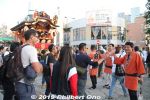
Uchiwa festival float bid visitors goodbye.Oct 20, 2019
|
|
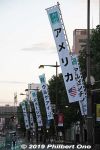
Street banners for all the rugby nations to play in Kumagaya.Oct 20, 2019
|
|

Paper lanterns.Oct 20, 2019
|
|

Oct 20, 2019
|
|
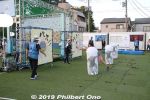
Interactive rugby activity. Try to throw the ball into the target hole.Oct 20, 2019
|
|
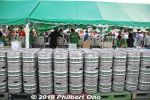
Beer booth's beer kegs. They were ordered to never run out of beer.Oct 20, 2019
|
|
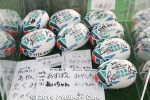
Oct 20, 2019
|
|
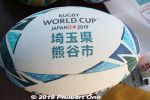
Rugby ball for Kumagaya.Oct 20, 2019
|
|
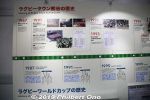
Oct 20, 2019
|
|
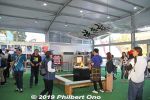
Inside Kumagaya Rugby Museum.Oct 20, 2019
|
|
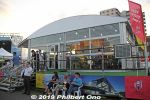
Kumagaya Rugby MuseumOct 20, 2019
|
|

Volunteer taking photo with a frame.Oct 20, 2019
|
|
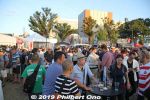
Oct 20, 2019
|
|
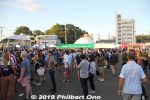
Lots of beer and food at the Kumagaya Fan Zone to watch rugby games.Oct 20, 2019
|
|
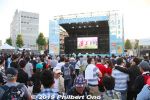
Kumagaya Fan Zone to watch rugby games.Oct 20, 2019
|
|
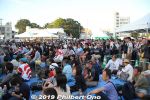
Kumagaya Fan Zone to watch rugby games.Oct 20, 2019
|
|
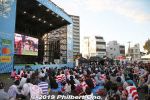
Kumagaya Fan Zone to watch rugby games.Oct 20, 2019
|
|
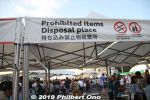
Spelling error above the security checkpoint.Oct 20, 2019
|
|
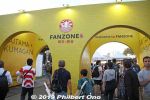
Entrance to Kumagaya Fan Zone.Oct 20, 2019
|
|
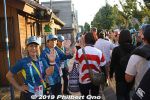
After getting off the bus, more volunteers saying goodbye with high-fives.Oct 20, 2019
|
|
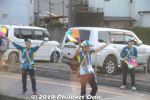
Volunteers on the street waving at buses.Oct 20, 2019
|
|
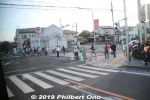
People walking back to Kumagaya Station. Good exercise.Oct 20, 2019
|
|

Shuttle bus with Olympic livery.Oct 20, 2019
|
|
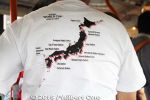
Oct 20, 2019
|
|
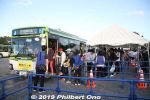
Shuttle bus back to Kumagaya Station.Oct 20, 2019
|
|

Shuttle buses lined up six at a time. Very little waiting.Oct 20, 2019
|
|

Shuttle buses.Oct 20, 2019
|
|
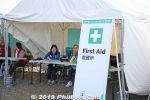
First aid station not so busy. They probably had to take care of mostly drunk fans.Oct 20, 2019
|
|
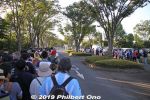
Walk left for the shuttle bus stop or walk on the right to walk back to Kumagaya Station (50-min. walk or 3.5 km).Oct 20, 2019
|
|

Oct 20, 2019
|
|
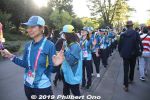
Oct 20, 2019
|
|

Oct 20, 2019
|
|

Oct 20, 2019
|
|

Friendly volunteers bid visitors farewell. RWC volunteers were selected randomly from a large number of applicants. They got free uniforms and a backpack.Oct 20, 2019
|
|

Volunteers give high-fives to spectators leaving.Oct 20, 2019
|
|

Volunteers give high-fives to spectators leaving.Oct 20, 2019
|
|
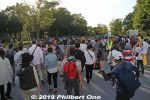
Oct 20, 2019
|
|
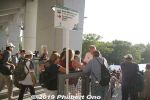
Way to the shuttle bus stop back Kumagaya Station.Oct 20, 2019
|
|

Easy to get out.Oct 20, 2019
|
|
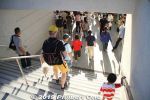
Time to leave the building.Oct 20, 2019
|
|

Players went around the stadium and bowed to fans.Oct 20, 2019
|
|

End of game. USA lost.Oct 20, 2019
|
|

Oct 20, 2019
|
|

Oct 20, 2019
|
|

Oct 20, 2019
|
|

The wave...Oct 20, 2019
|
|

Sumo get-upOct 20, 2019
|
|

Oct 20, 2019
|
|

Oct 20, 2019
|
|

Oct 20, 2019
|
|

Argentina rugby fanOct 20, 2019
|
|

Oct 20, 2019
|
|

Oct 20, 2019
|
|

Oct 20, 2019
|
|

Oct 20, 2019
|
|

Stray ball in the stands. Kids are thrilled to catch it.Oct 20, 2019
|
|

Oct 20, 2019
|
|

Oct 20, 2019
|
|

Oct 20, 2019
|
|

Oct 20, 2019
|
|

USA looks mean before the tackle.Oct 20, 2019
|
|

Oct 20, 2019
|
|

Oct 20, 2019
|
|
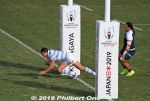
Argentina scores a try.Oct 20, 2019
|
|

Oct 20, 2019
|
|

Argentina scores a try.Oct 20, 2019
|
|

Oct 20, 2019
|
|

Oct 20, 2019
|
|
| 2434 files on 10 page(s) |
 |
3 |  |
 |
 |
|